10 Shade-Resistant Plants Keeping a beautiful garden doesn’t always depend on receiving direct sunlight. In fact, there are many areas of our homes and yards that have little light, but that can still be transformed into beautiful green corners. In addition, there are several plants that adapt perfectly to the shade and can flourish even with indirect light. Therefore, in this post, you will learn about 10 plants that survive in the shade, as well as practical tips for caring for them and decoration ideas that take advantage of these spaces.
Throughout this article, we will discuss the benefits of growing plants in shaded areas, explain what to consider before choosing your species and, most importantly, present a detailed list of the 10 best plants for low-light environments. So, even if your space doesn’t receive full sun, you can create a vibrant garden full of life. So, keep reading and find out how to transform even the darkest corners into true natural refuges!
10 Shade-Resistant Plants: The Importance of Growing Plants in Shady Environments
First of all, it is essential to understand why investing in plants that survive in the shade is an excellent strategy for those who have environments with low light. Firstly, many areas of the house, such as hallways, interior balconies and remote corners, receive little light, but that does not mean they cannot be used. Furthermore, by choosing the right species, you not only beautify the space, but also improve air quality and general well-being.
In addition, growing plants in shaded environments brings economic and environmental benefits. For example, by adopting species adapted to shade, you reduce the need for excessive watering and special fertilizers, which generates simpler and more sustainable maintenance. Furthermore, investing in a garden for low-light areas can increase the value of the property, as it creates a welcoming and unique environment.
Therefore, by choosing plants that survive in the shade, you take advantage of underused spaces, save resources and contribute to a more sustainable lifestyle.
10 Shade-Resistant Plants: Important Factors When Choosing Plants for Shade
Before we present the list of 10 plants, it is important to consider some aspects that influence the success of growing in areas with little light. First of all, it is essential to evaluate the intensity of the shade, as not all shady areas are the same. For example, some plants prefer full shade, while others thrive in moderate, indirect light.
In addition, the type of soil and humidity of the environment also play a crucial role. If the soil is well-drained and has the correct moisture content, the chances of success increase significantly. In addition, the size of the available space must be considered, since some species can spread out and grow quite large, while others remain more compact.
Therefore, when planning your cultivation, take into account the intensity of the shade, the type of soil, humidity and physical space. This way, you can select the species that best adapt to the conditions of your environment.
10 Plants That Survive in the Shade
Below, we present a detailed list of 10 plants that thrive in areas with little light. Each species has unique characteristics and specific care requirements, but all demonstrate a remarkable ability to adapt to shaded environments.
1. Zamioculca (ZZ Plant):
Zamioculca is one of the most popular plants for low-light environments, and for good reason. Its thick, glossy stems store water, making it extremely hardy and low-maintenance. Plus, it has a modern look that adapts well to different decor styles.
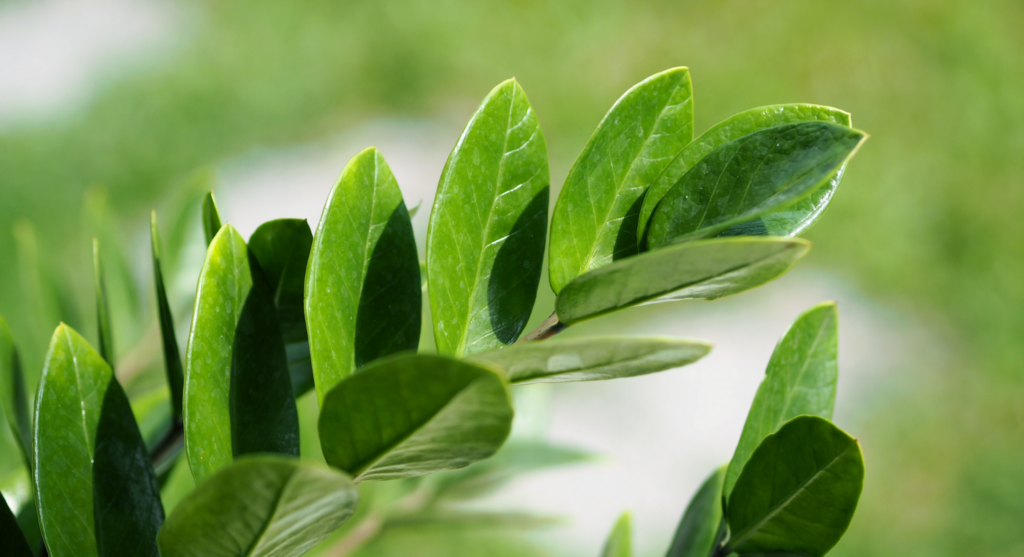
- Care: Water moderately, as the plant tolerates periods of drought. Avoid excess humidity.
- Ideal for:Indoor environments, side tables and bookshelves.
2. Snake Plant (Sword of St. George):
Known for its hardiness, Snake Plant is another excellent option for shady areas. This plant has long, stiff, pointed leaves that provide a striking appearance. Furthermore, it stands out for its low water requirement.
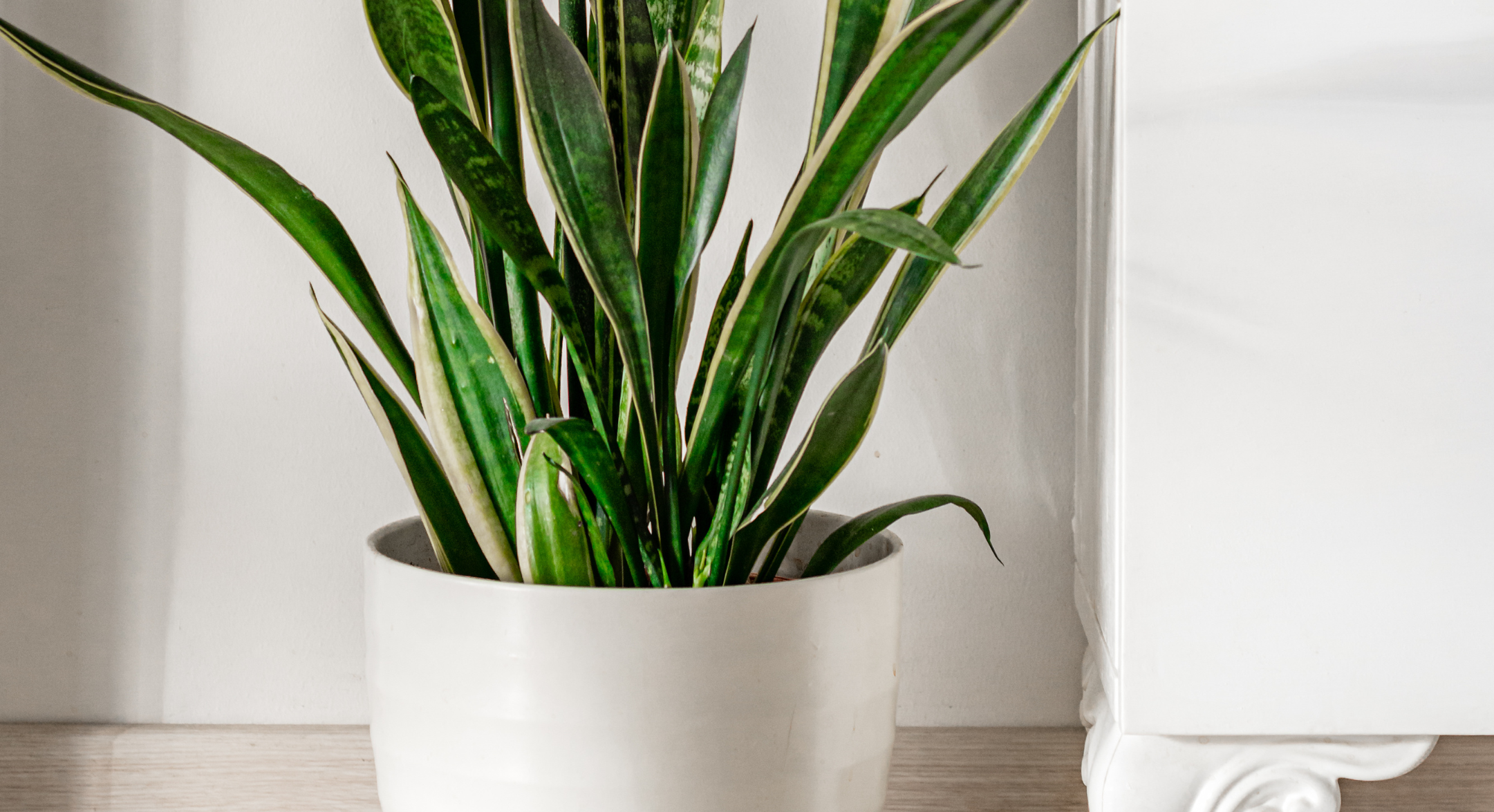
- Care: Water sparsely and avoid leaving the soil soggy.
- Ideal for:Indoor environments and areas with indirect lighting.
3. Philodendron:
The Philodendron is a tropical plant that adapts very well to environments with little light. Its large, lush leaves are ideal for creating a natural and lush look, even in shaded areas. In addition, this species helps to purify the air in the environment.
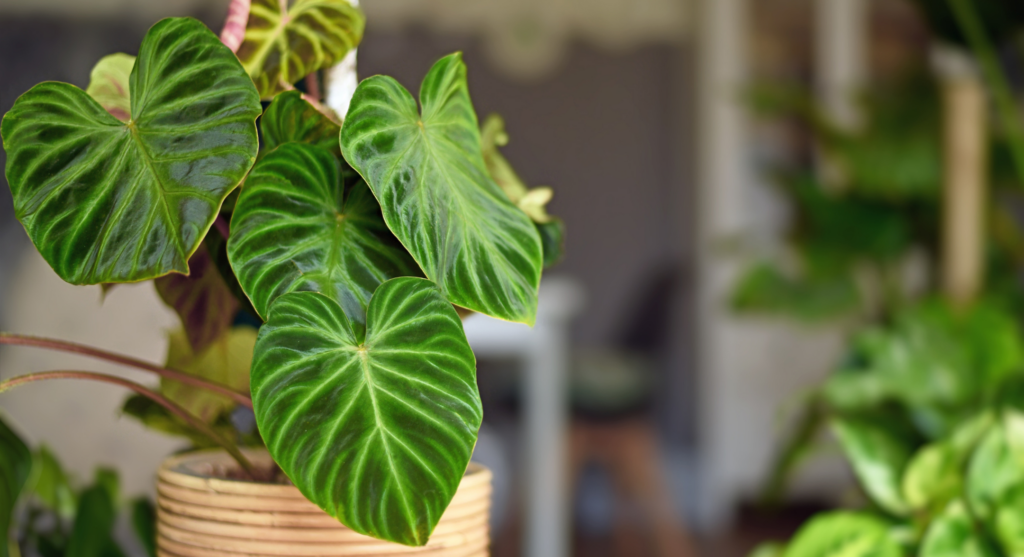
- Care: Water regularly, but always avoid waterlogging the soil.
- Ideal for: Large vases, room corners and indoor gardens.
4. Jiboia:
The Jiboia is a climbing plant that stands out for its ease of cultivation in environments with indirect light. Its heart-shaped leaves and rapid growth make it a versatile choice for decorating different spaces. On the other hand, it can be grown both in pots and on plant supports.
- Care: Water sparingly and protect from direct sunlight.
- Ideal for: Hanging baskets, shelves and interior walls.
5. Maranta (Plant of Prayer):
Maranta is known as the “prayer plant” due to the movement of its leaves that close at night. This plant has decorative and colorful foliage, which adapts well to environments with low light. In addition, it adds an exotic touch to the decor.

- Care: Keep the soil slightly moist and avoid direct exposure to sunlight.
- Ideal for: Coffee tables, shelves and small indoor gardens.
6. Calathea:
Calathea is highly prized for its unique and vibrant patterned leaves. Although it is sensitive to direct light, it grows perfectly in shaded areas, especially in environments with controlled humidity. Therefore, Calathea is an excellent choice for those who want a tropical touch in their environment.
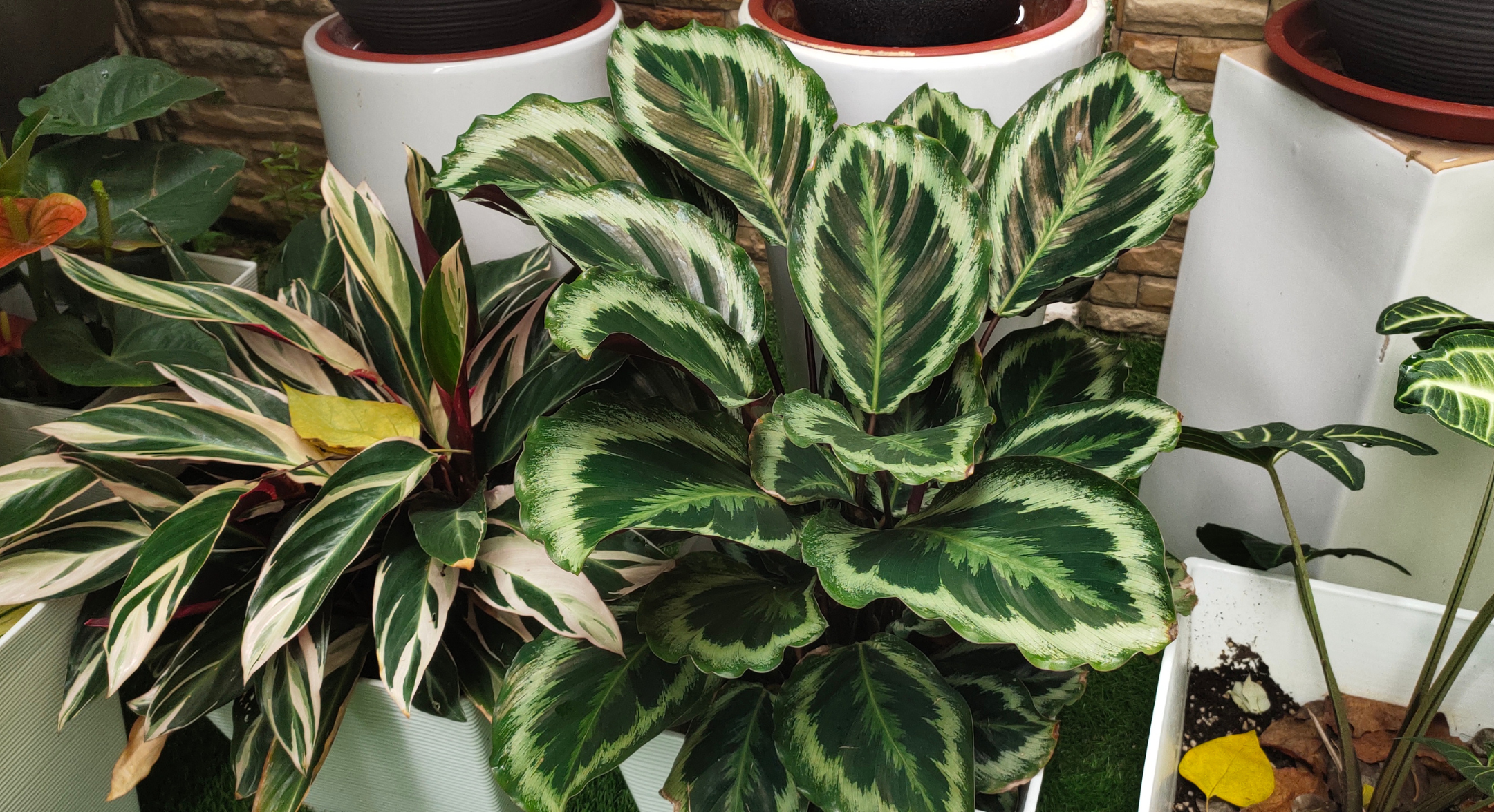
- Care: Keep the environment humid and protect the plant from strong sunlight.
- Ideal for: Bathrooms, kitchens and shaded indoor environments.
7. Spider Plant (Chlorophytum):
Spider Plant, or Chlorophytum, is recognized for its ability to regenerate and ease of cultivation. This species tolerates shade well and is ideal for beginners. In addition, it adapts to different types of pots, which makes it extremely versatile.

- Care: Water moderately and always keep the soil slightly moist.
- Ideal for:Pending vases, tables and shelves.
8. Aglaonema:
Aglaonema is an easy-care tropical plant that thrives in low-light environments. Its leaves, which can vary in shades of green and silver, create a striking and elegant look. On the other hand, it is quite tolerant of shade conditions.

- Care: Water moderately and avoid intense sunlight.
- Ideal for: Offices, living rooms and indoor environments with indirect lighting.
9. Peperomia:
Peperomia is a compact and versatile plant, perfect for decorating small and shady spaces. It has a variety of leaf shapes and colors, which allows for very creative arrangements. In addition, its maintenance is simple and it adapts well to indoor environments.

- Care: Water sparingly and prefer locations with indirect light.
- Ideal for: Small vases, tables and decorative arrangements.
10. Aspidistra:
Known as the “iron plant”, Aspidistra is extremely hardy and thrives in low-light environments. Its broad, robust leaves are ideal for areas where other plants may not thrive. As such, it is a classic choice for shaded environments.
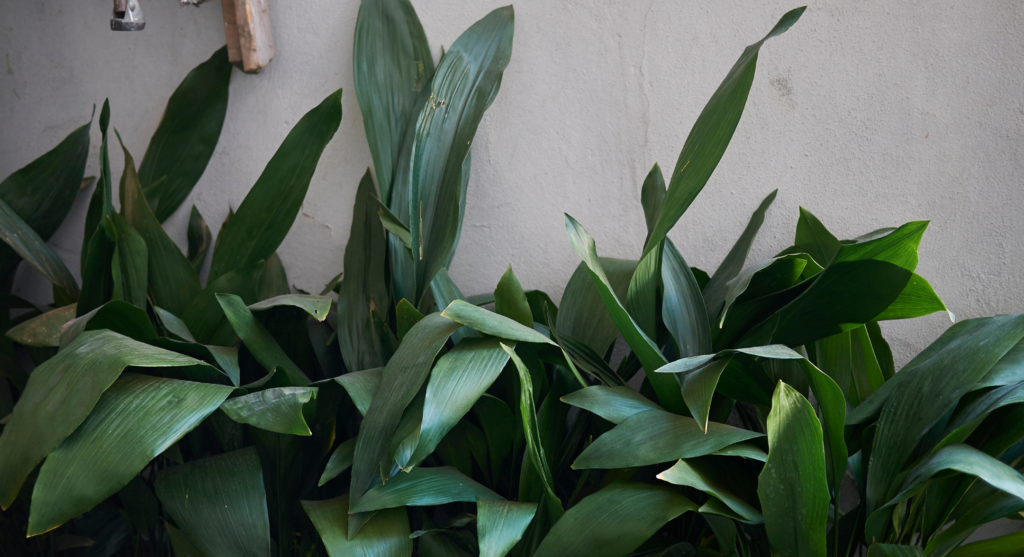
- Care: Water sparingly and avoid direct sunlight.
- Ideal for: Hallways, living rooms and low-light environments.
Specific Care Tips for Shade-Growing Plants
In addition to choosing the right species, adopting care practices is essential to ensure that your plants thrive. First, it is essential to adjust the frequency of watering, as environments with little light tend to have less evaporation. Therefore, avoid overwatering and always check the soil moisture before applying water.
Furthermore, periodic fertilization is important. Use organic or slow-release fertilizers, which provide nutrients gradually and help maintain healthy plant growth. On the other hand, cleaning the leaves is also essential. Periodically wipe the foliage with a damp cloth to remove dust, as this ensures that the plants absorb indirect light better.
Furthermore, be aware of pest control. In shaded environments, plants may be more susceptible to infestations. Therefore, regularly monitor each species and, if necessary, use natural products to combat pests. Finally, if the environment is too dark, consider using LED grow lights, which help plants perform photosynthesis more efficiently.
Creative Ideas for Integrating Shade-Like Plants into Your Decor
In addition to basic care, it is possible to integrate plants that survive in the shade in creative ways into the decor of your environments. First, you can create vertical gardens on indoor walls, which saves space and adds a touch of modernity. In addition, arrangements on tables and shelves allow you to combine different species, creating harmonious compositions.
Another interesting idea is the creation of reading or relaxation corners, where plants act as elements of tranquility and freshness. For example, place a maranta or a philodendron next to a comfortable armchair to create a cozy space. Furthermore, strategically positioned mirrors can increase the feeling of space and reflect the beauty of the vegetation, making the environment even more vibrant.
It’s also worth investing in decorative vases and creative supports. This way, even small plants, such as peperomia or chlorophytum, stand out and contribute to a modern and personalized look. Last but not least, mixing different textures and tones, such as glossy and matte leaves, results in a striking visual effect.
Examples of Plant Compositions for Low-Light Environments
To help you get inspired, here are some examples of compositions you can adopt:
10 Shade-Resistant Plants: Indoor Vertical Garden
Imagine a room with an empty wall transformed into a vertical garden. For example, combine the snake plant, the philodendron and the calathea in different pots and arrange them on a wooden panel. This way, even with little light, the arrangement becomes a focal point of beauty and life. Additionally, use LED lights to highlight details and create a dramatic effect at night.
10 Shade-Resistant Plants: A Green Corner for Offices
In an office with indirect lighting, create a green corner using aglaonema and aspidistra. Also, place a small table with a maranta plant next to it, creating a space that inspires calm and productivity. Furthermore, the integration of decorative accessories, such as paintings and rugs, complements the environment in a harmonious way.
10 Shade-Resistant Plants: Composition for Balconies and Terraces
For balconies or terraces with shade, opt for large pots that hold species such as snake plants and zamioculcas. This way, even in areas with low light, you create a welcoming outdoor environment. In addition, the combination with sturdy outdoor furniture and soft lighting makes the space ideal for relaxing and receiving guests.
In short, investing in plants that survive in the shade is an excellent strategy for transforming environments with little light into vibrant and welcoming spaces. Firstly, choosing the right species, such as zamioculca, snake plant and aspidistra, allows you to take advantage of previously underused areas. In addition, by following the care tips – adjusting watering, fertilization and pest control – you ensure that these plants thrive even in adverse conditions.
Therefore, if you have low-light environments in your home or office, be sure to consider integrating these plants. By carefully planning and investing in creative compositions, it is possible to transform any space into a natural and elegant refuge. Also, remember that small changes in habits, such as cleaning leaves and monitoring water consumption, can make a big difference.
Ultimately, the savings in effort and the benefits to air quality are just some of the many reasons to bet on this trend. We hope this complete guide on 10 plants that survive in the shade has been useful and inspiring. If you liked the tips, share this content with friends and family, and leave your comments about your experiences and compositions. After all, together we can promote the beauty of shaded environments and encourage sustainable cultivation.

